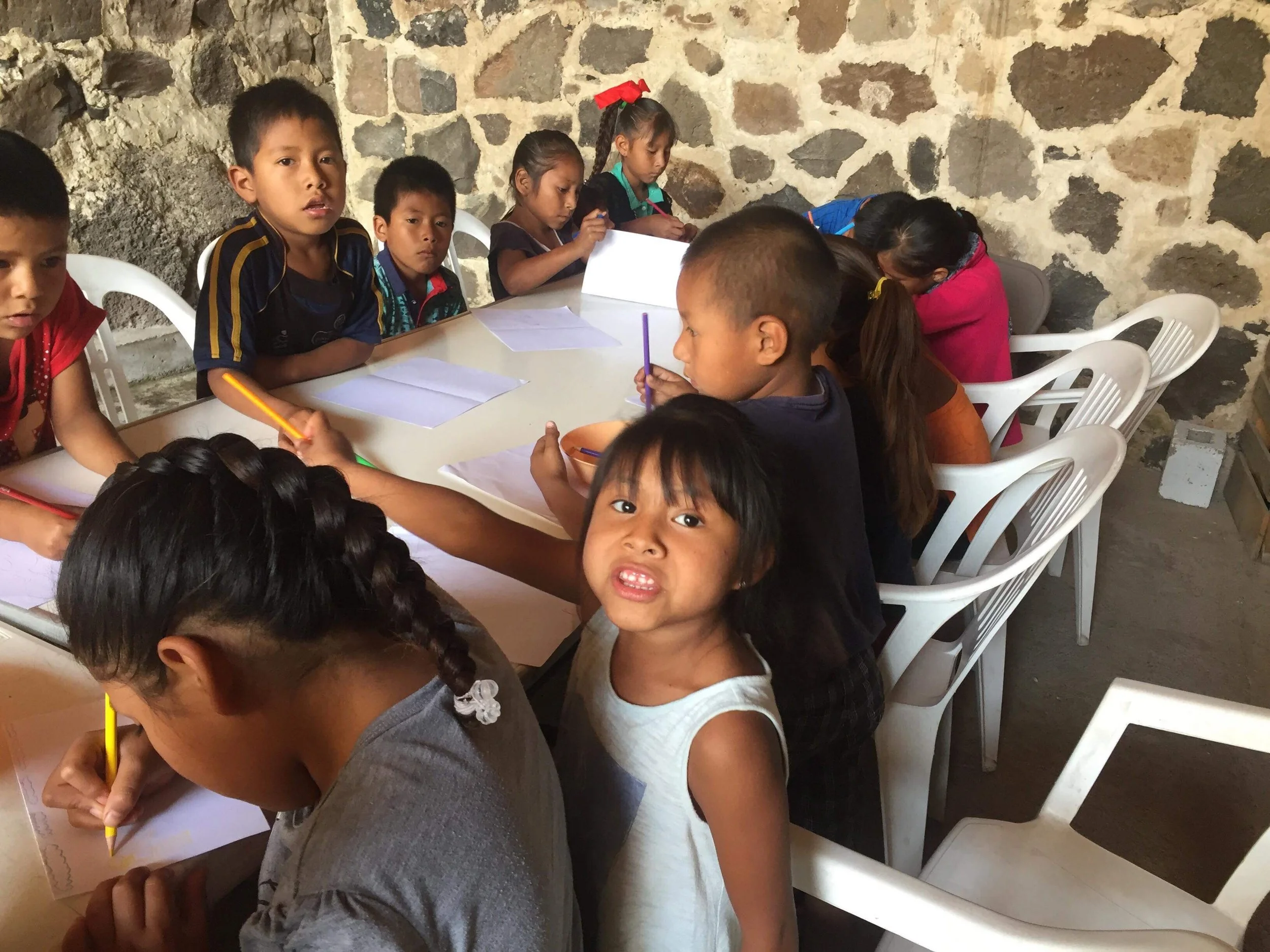One of our favorite tools we use to get inside the hearts of the children we reach is art therapy. Though to the child, we are just doing art, to us, art is often an open door into their thoughts and mind. Children, often draw in order to express emotions, because they don’t always know how to express different feelings through words, and often aren't even aware of what they are actually feeling. You will often find that through their art they express their joys, hopes, dreams, family life, as well as fears, nightmares, and pain through drawings. It is a tool that can be used to see how they view themselves and those around them, as well as tell stories of things that have taken place or what they desire to take place in their lives.
Have you ever tried art therapy at home with your kids? We would encourage it! The key is to not read too much into your child's art, but rather ask questions and allow the child to tell you what their drawing means to them.
Some things to look at as your child is explaining their drawing to you *note, just because this is what is recommended by different counseling networks doesn't always mean that is what your child is feeling/thinking* trust your child:
- Black and purple suggest dominance, and can be favored by a child who is relatively demanding.
- Blue is popular with children who have a caring nature and enjoy company.
- Red is the color of excitement, may be used especially by children who don’t want to miss out on anything, and is one of the most popular colors for children to use.
- Pink shows a need for love and appreciation and is favored by girls
- Green is the color of those who like to be different, like space, and are artistic and intelligent.
- Yellow also demonstrates intelligence and a sunny nature.
- Impulsive child: Big figures, no necks, and asymmetry of limbs.
- Anxious child: Clouds, rain, flying birds, no eyes on the figures
- Shy child: Short figures, no nose or mouth, tiny figures and arms close to the body
- Angry child: Big hands and teeth, long arms, crossed eyes
- Insecure child: Monstrous figures, tiny heads, no hands, and slanted figures
- Detailed, careful drawings may reveal a child who feels the need to try very hard.
- Bold strokes, especially if close together, can be a sign of stress, strong feelings, determination or anger, while softer marks suggest a gentler nature.
- The quality of line can also be significant – a figure drawn with light, wavering, broken lines, can reveal a hesitant, insecure child who appears to think as he goes along. By contrast the bold, continual, freely drawn line is expressive of self-confidence, and a feeling of security.
- When drawing figures, the size, and the relative size of the figures drawn is considered to be significant, with more important or dominant figures being drawn larger.*
*https://novakdjokovicfoundation.org/learn-to-decode-childrens-drawings/
Where to start?:
We love the suggestions that this site offers, and have found it to be one of our go to sites when we need a new activity.
http://intuitivecreativity.typepad.com/expressiveartinspirations/100-art-therapy-exercises.html



